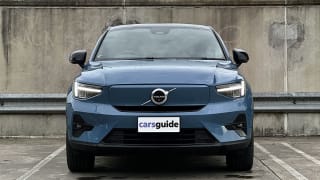There are a whopping eight variants for the Kona range and you have a choice of four powertrains – petrol, turbo-petrol, hybrid or fully electric like our flagship Premium Extended Range model.
The model on test is priced from $68,000, before on-road costs, and that positions it in the middle of its rivals.
Based on a NSW, 2000 postcode you can pick up the Kia Niro EV GT-Line for $66,590 MSRP and the Volvo C40 Plus variant for $78,990 MSRP.

The most affordable rival is the newcomer, Renault Megane E-Tech for $64,990 but it's important to note the E-Tech is only offered in a mid-spec variant for the Australian market at the moment.
Compared to it's rivals, the flagship electric Kona is well-priced but it’s a hefty $20K jump up from the equally equipped top petrol version.
Being top dog, you should expect a host of premium features like a sunroof, heated, ventilated and power-adjustable front seats, heated rear outboard seats, a heated steering wheel and eight-speaker premium Bose audio.
The front seats also feature a 'relaxation mode' where they act as a recliner, providing a comfortable option for charging sessions.

Practical features include a handsfree powered tailgate, 27L frunk storage, remote parking assist (from the key fob), over-the-air updates for the built-in satellite navigation and Hyundai connected services app.
Unusually for an EV, you also get a temporary spare wheel in this model instead of a repair kit.
Other features include some A-grade tech like dual 12.3-inch technology screens, fast USB-C ports, a wireless charging pad, and vehicle-to-load function in the form of a three-pin standard house socket so you charge larger appliances.

























